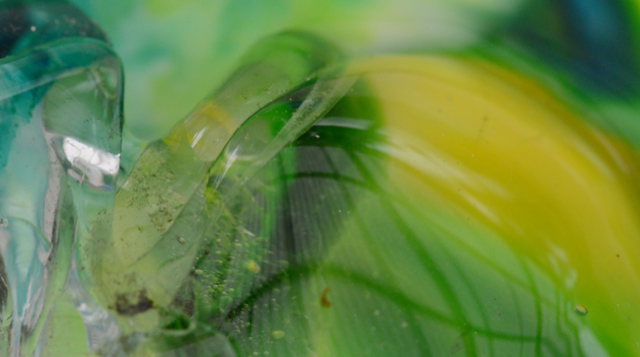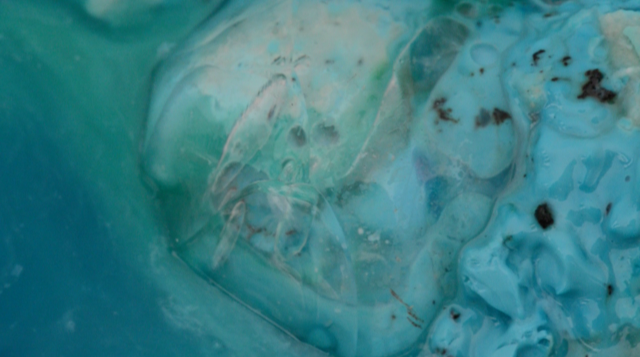The Guildhouse Collections Project
- Community

The Guildhouse Collections Project with Adelaide Symphony Orchestra presented in partnership with Adelaide Festival Centre and the City of Adelaide.
fuliguline
The Guildhouse Collections Project provides a rare and wonderful opportunity for an artist to delve deep into the treasures of an important state collection; to research, study and collaborate in order to produce new work for presentation.
For over 80 years, the ASO has played a significant role in the South Australian identity, providing cultural and economic vibrancy, enriching the community through a diverse program of world-class performances.
Throughout 2020, as restrictions permitted, contemporary visual artist Michael Kutschbach observed Adelaide Symphony Orchestra as his collection research, viewing the orchestra itself as a living collection. Exploring intuitive responses between performers, between performers and instruments, between sound and the theatre space, Kutschbach noted that these elements come together to create a unique living organism. In turn he has created a rich visual response, interpreting nuances of musicians coming together to perform a musical score. With wild colour and slow, bubbling movement the artist creates an image that engulfs the viewer in much the same way as the music he witnessed performed does.
Presenting this new work on a large external screen to passers-by extends the living organism from the walls of Adelaide Symphony Orchestra and Adelaide Festival Centre and sets the organism loose onto the streets of the City of Adelaide.
Adelaide Festival Centre: 9 April – 9 May 2021
East End Projection, City of Adelaide: 9 April – 30 June 2021


Artist Statement
fuliguline. The title for this work means ‘of or pertaining to sea ducks’. As beautiful and unusual as some of these creatures may be, this project has nothing to do with sea ducks. Titles for me are more about intuitive responses that serve no logic, about phonetics and how the sounds might roll around in your mouth and be suggestive of things or phenomena. Titles to my work do not help to explain, but they do need to look right in a hand-written or typed form
It is this visual and sensory impulse that drives the way I work. I search out images, forms, textures etc. that offer up direct sensory experiences within a language of their own making.
When I first applied to Guildhouse to be a part of their Collections Project with Adelaide Symphony Orchestra, I did so with the intention not of documenting their activities or producing work specifically about the ASO, but rather with the intention of finding visual correspondences between my studio practice and what I observed at the ASO. As someone who has little to no music education or understanding, I thought of this as a respectful and productive framework to observe the activities of the ASO in relation to a material-based, visual arts practice.
While not the most advantageous year to be involved in such a project, with many restrictions in place around public gatherings and performance, I did, however, manage to engage with the workings of the ASO on many occasions. This was done largely by sitting in unobtrusively on rehearsals and simply listening and observing. Needless to say, it was an absolute privilege to be able to experience the workings of the orchestra within such an intimate environment.
My initial observations were centred around thinking of the greater ASO organisation in terms of a living organism. Observing it through this lens allowed me to reflect on the interactions and outputs of musicians, management, administration, architecture, audience etc. as something very lively, supportive and interdependent. Using the analogy of a Siphonophore, (a type of sea creature akin to a jellyfish yet actually a co-dependent colonial organism), I tried to gain a sense of the ASO not as a rigid hierarchy of separate roles, but rather as a far more organic and dynamic body of individual and co-dependent phenomena.
When it came to making work in the studio in response to these observations of the ASO, I would look for similar analogies within the world of materials and actions that I had set up there. For instance, what might a symphony of materials consist of, a family of specific and complimentary matter. What groups of materials correspond well together and which groups don’t. Then there was the question of what conditions would be imposed on these sets of materials that might affect them to produce something special (gravity, movement, wind, magnetism, heat, chemical reaction etc.). On some level an orchestra consists basically of a bunch of people plucking, blowing, sliding and banging on strange looking inanimate objects and as a result producing something (sound in this case) quite magical and beyond definition. Could a material-based practice that brings together various materials/matter in combination with certain actions or forces, bring about an equivalent sense of magic within a visual, moving image realm? That was part of my attempt with this project.
One of the key observations that came up during my time with the ASO, apart from the deeply affective and sensory appeal of symphonic sound, was the idea of silence and of synchronisation. The moment in a performance or a rehearsal when the first violinist stands up and the orchestra members shift their attention from the idiosyncrasies and chatter of their own instruments (and their own personalities perhaps), and tune their attention and instrument sound to the same note. There is something quite hypnotic about the moment of silence that follows this synchronisation. It’s a silence that is full, not empty. The sense of expectation and the shift in focus that occurs during this passage of time is one of the most powerful moments in a performance for me, transformative, supernatural almost.
The resulting video work for this project, titled fuliguline, is a multi-channel work that consists of a variety of passages of filmed, studio-material experiments. These events (mostly shot with a simple phone camera and a macro lens) come across as abstract, haptic, visceral scenes of material in motion. Matter is shown as unfixed and in a constant state of flux. The haptic, visceral quality of much of the imagery is targeted to give the viewer a powerful sensory experience, rather than a more familiar narrative driven series of planned events. As a result, time is manipulated as the imagery shifts in its flow from mostly languid, slow time movement, through to passages of frantic time-lapse motion.
For the multi-channel installation, multiple screens are each showing different footage. Without warning, and at unspecified moments throughout the footage, all of the individual tracks/screens synchronise to the same footage for a few brief moments, finding a visual analogue to the orchestral moment of synchronisation/tuning mentioned before, and delivering a silence that is full.
This work is seen as an ongoing and adaptive project. The footage shown is accumulative and as time goes by, new material experiments in the studio fold themselves into the timeline footage. The presentation format also changes according to the venue. Either as a single, 2 channel or 20+ channel work comprising multiple projectors and TVs for gallery and other public venues.
Michael Kutschbach
